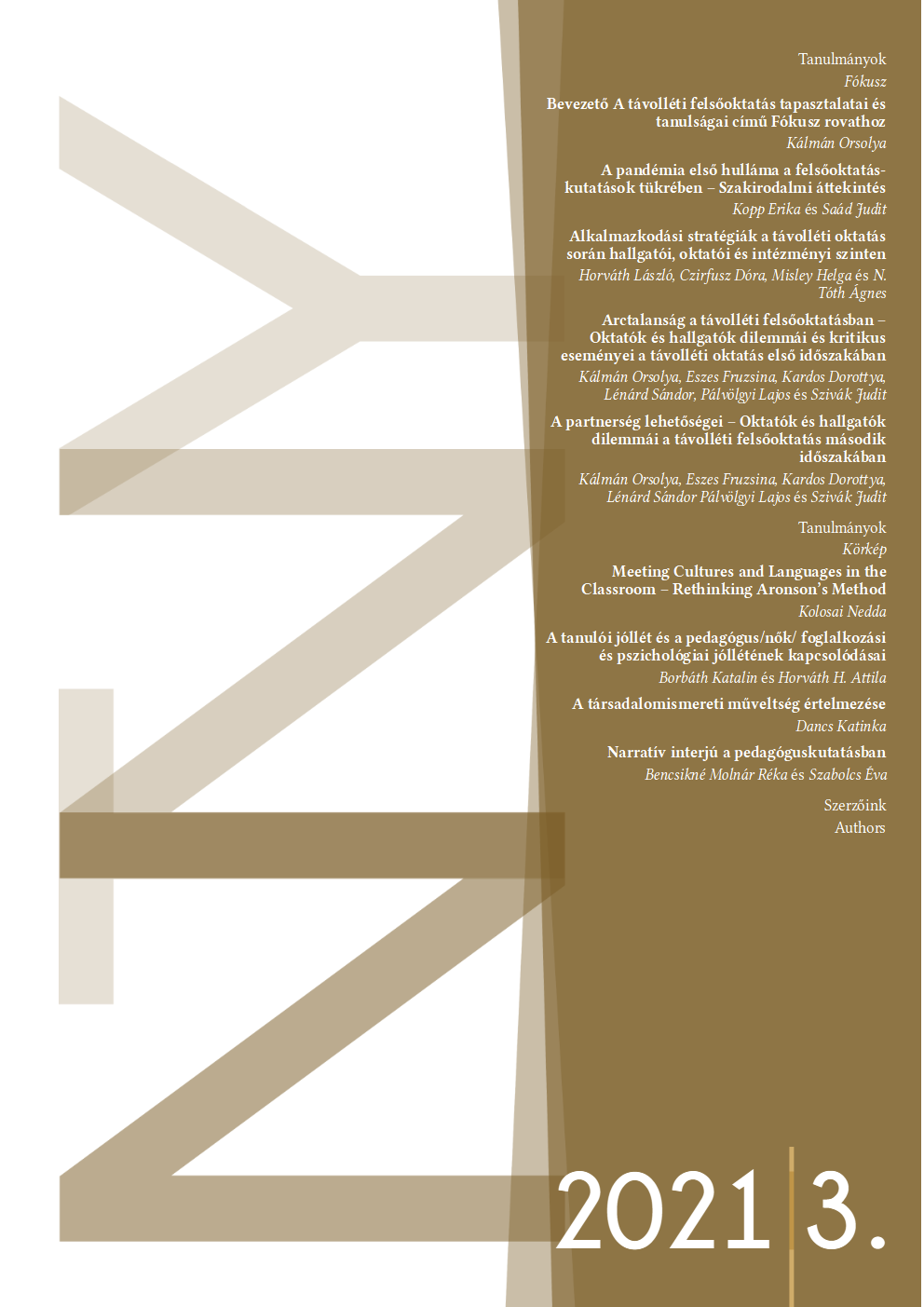Absztrakt
Prejudices unconsciously influence the actors in school life, and may unintentionally hinder opportunities of equal access to learning, because teachers speak ‘another language’, use other language codes which many children are unable to decipher. By adapting and re-thinking the Aronson mosaic method, our research team has developed an innovative circular classroom learning model that creates opportunities for the validation of different aspects in teaching. The study seeks answers to the following questions: Which aspects of the Circular Learning method make it possible to compensate for cultural and linguistic differences? What factors can make peer-to-peer education effective from the children’s perspective? We studied mutual learning and teaching by peers in spring 2018, when 284 children and 74 trained adult observers took part in the process. We studied the complex pedagogical and educational process in 30 classes in 3 schools, in 4 times 45-minute activities in each class, factors that reinforce the validity of the research and its results. We processed the quantified answers of Children and Adults Assessment Forms in two ways. 1) An R Statistical Program and SPSS Statistical Program in which test groups were compared with a two-sample t-probe. Correlation calculations were performed using the Spearman correlation coefficient at alpha = 0.05 significance level, which we corrected through Holm’s method for multiple hypothesis testing. 2) We processed the answers of both children and adults by qualitative content analysis. The learning organization procedures used in our research model create opportunities for children from different cultures, with different mother tongues and of very different socio-economic status (diversity) for learning, equal access to knowledge (equity), cooperation with each other, and equality, as well as mutual understanding (sustainability). Currently in Hungary and worldwide, developing the ability of children to integrate into another person’s way of thinking is of great importance. Ensuring the perspective of others, in addition to the effectiveness of learning, is a significant factor in developing empathy.
